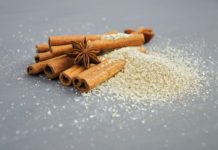The ketogenic diet is a low-carb and protein-rich diet. In the process, the body uses fat as fuel and the liver produces ketones which then used as a source of energy. The 3rd edition in the Keto Diet Guide is about the process of the ketogenic diet- explained in detail.
In the Ketogenic diet, proteins and fats are utilized to form energy packets known as ketones. This process is called ketosis. To put it in a nutshell, the ketogenic diet put the body in a state of ketosis. A keto diet contains about 70% fat, 25% protein, and 5% carbohydrates intake.
Read Also: Is Ketogenic Diet Safe For Health
If you talk about ketosis, it’s more of a natural process that the body utilizes to fill the energy gap. When we consume less glucose in diet the body itself starts to break the fatty acids and proteins in order to provide it with sufficient energy and nutrition to the brain cells. To put the body in ketosis modification in a regular diet is required. Which is done with extreme care and under the supervision of experts. Here are some simple steps that experts recommend for ketosis.
1. Limit carbohydrates intake
Our regular diet consists of a large intake of carbohydrates. It’s because carbs are natural growth factors required for the proper functioning of the body. But the alternatives are ketones, triggered when the body runs out of carbs. To do that, limit your carbohydrates intake and try to maintain it below 35 grams of carbohydrates per day.
2. Make a change in protein intake
Protein intake is essential for muscle and bone development in the body but its excess can lead to weight gain. It also lower the levels of ketosis. For proper functioning of ketosis process the ideal intake of protein should be between 0.6 g and 0.8 g protein per pound.
3. Gather enough fat in body
Fat is the fuel for ketosis. So, during ketogenic diet make sure to eat fat rich food and stop worrying about fats. The perk of being on keto diet is not to lose weight because of hunger.
4. Drink enough water
Water is the essence of living. Our body is composed of above 50% of water. We need to consume at least 1 gallon (3.8 liters) of water a day, in order to regulate many vital body functions. Water also plays an important role in controlling hunger levels. So, while being on ketogenic diet make sure to increase your water consumption.
5. Stop consuming snacks immediately
Mostly snacks are carbs rich and produce more insulin in the body per day than normally is required. Weight is strongly related to insulin production and it loses quickly while body produce less insulin. Cutting out snacks from diet is vital during ketosis for losing weight effectively and quickly.
6. Fasting is a solution
During fasting body consumes the carbs quickly and when it ran out of carbs it uses sugar and convert it into ketones. The ketones serve as energy backup in such situations.
7. Exercise Regularly
Weight loss is the ultimate benefit of keto diet among many more. But if you merely rely on diet it would be difficult to say you will lose weight quickly. So, consider adding 20-30 minutes of exercise per day. Exercise helps in improving sugar levels in the body and regulates weight loss.
The Bottom Line
The main point to understand here is- Ketogenic diet is not based on low intake of calories but on the low intake of carbohydrates. Human body adapts to changes quickly and as soon as body realizes the reduction in carbs intake. It will switch to fats breakdown method as main source of energy. Ketosis has lots of advantages aside form suitable sugar levels to enhance mental ability. The key point of concern is to adopt the diet under proper guidance.
Read Also: Ketogenic Diet Suggestions For Beginners






















